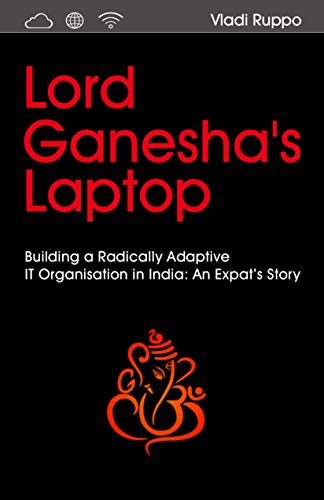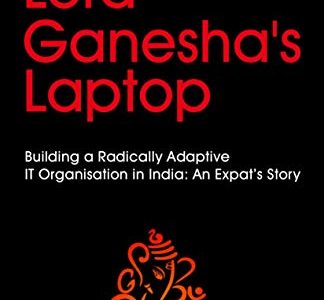 Lord Ganesha’s Laptop: Building a radically adaptive IT Organisation in India: An expat’s story is an engrossing story of how the return ticket for an International trip got extended from 6 months to 18 long years. This is the story of an aspiring engineer who spent the prime of his career in a foreign country building an Agile enterprise from scratch. This is the story of a “foreigner” discovering India, its culture, its people, their aspirations, and their quirks, in his journey to build the organization.
Lord Ganesha’s Laptop: Building a radically adaptive IT Organisation in India: An expat’s story is an engrossing story of how the return ticket for an International trip got extended from 6 months to 18 long years. This is the story of an aspiring engineer who spent the prime of his career in a foreign country building an Agile enterprise from scratch. This is the story of a “foreigner” discovering India, its culture, its people, their aspirations, and their quirks, in his journey to build the organization.
Books usually prescribe frameworks and strategies. This one, however, takes you through an experiential journey of Vladi (author) and his trusted lieutenants, navigating through the turbulent skies of keeping energetic engineers inspired to maintain a product that was sentenced to end of life, even as a shining new product was being developed in plain sight.
Most leaders struggle to gain acceptance of the teams and many fails, but what is interesting in the book is how Vladi, being a “foreign” leader as he calls himself, imparts a valuable lesson that this is not achieved just by spending hours in the comforts of an air-conditioned board room, but by deeply understanding and empathizing with people. In his case, he did not endlessly try to discover “empathy” sitting in his plush corner office, but by traveling length and breadth of India, discovering places, people, and culture and relating to the people he works with. Something every aspiring leader can learn.
Vladi has tactfully managed to keep the readers hooked with his atypical storytelling, averting what could otherwise have been a long, boring corporate saga. One of the most riveting aspects of this book is how Vladi controls the pace. If you have ever been on a roller coaster ride, you’d experience that as the roller coaster train chugs to the top, the pace slows down, and the next minute you are in a free fall. You will have a similar experience in terms of how the storyline is paced – in some pages, the story breezes past the months, and in some places, it grips you to the minute.
The second part is a handbook of real challenges that an aspiring, growing organization undergoes, the challenges that growth brings in & how M&As trigger the survival instincts for the organizations as if a Chuck Noland, cast away to an uninhabited island struggles for survival. The book makes a strong case for how critical it is for leaders to seek self-transformation and develop a growth mindset, before expecting the organization to transform.
If you are a professional aspiring to be a leader, this is a case study you must master. This book should serve as a reference for all the management professionals, to keep handy as they sail through the high seas of the VUCA world. If, however, the case study promises to be a fun ride as well – one can’t complain!
